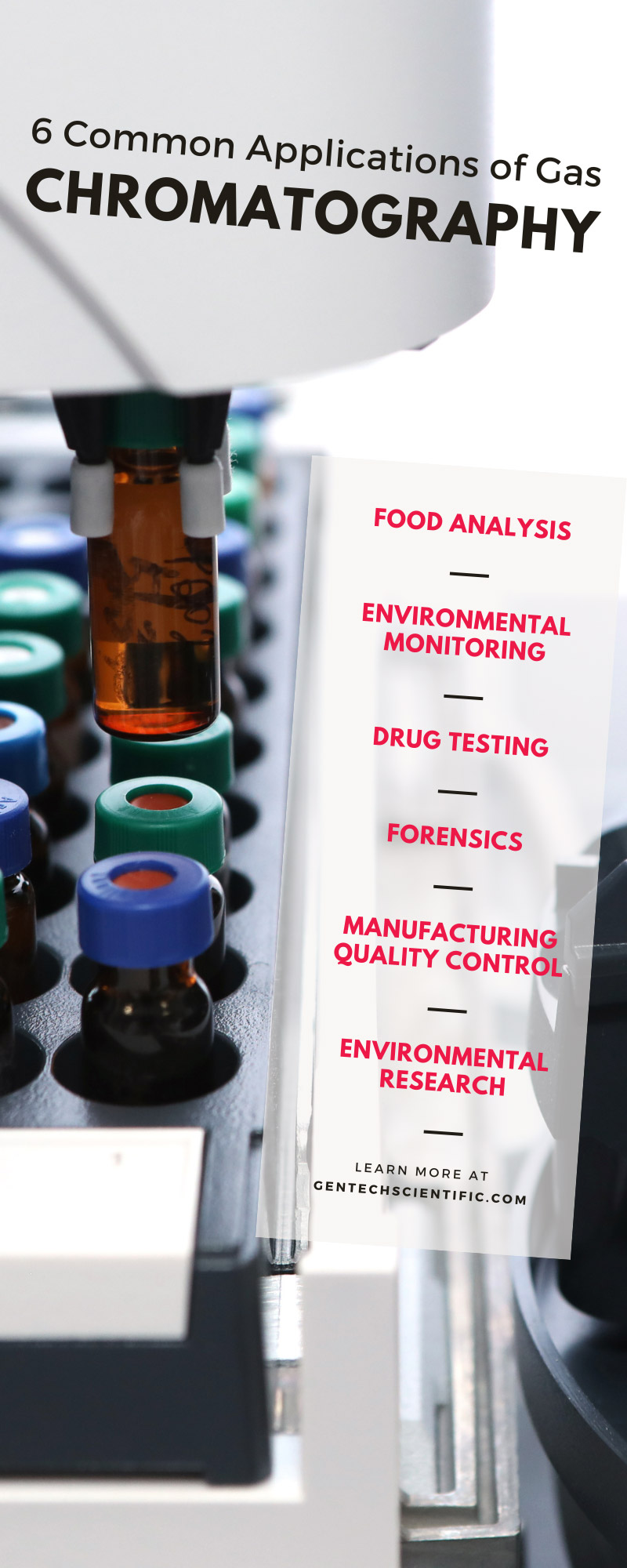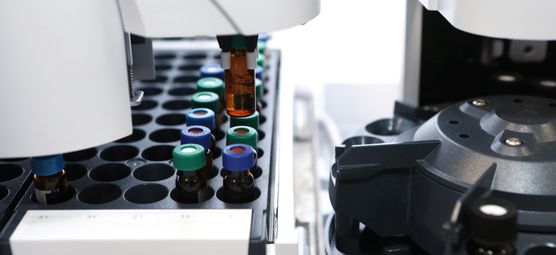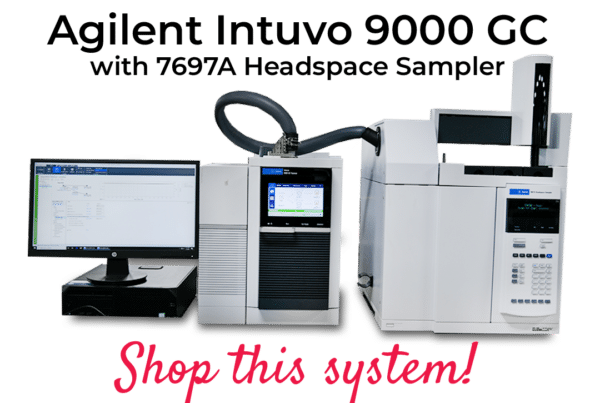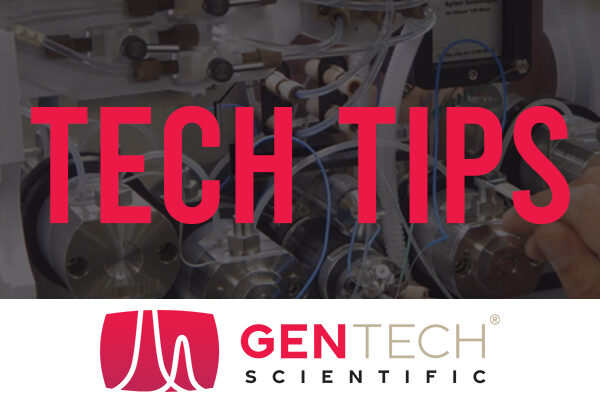Due to the accuracy, convenience, and versatility of gas chromatography, it’s a preferred method of analytical analysis in many industries. In our guide, we’ll briefly go over the basics of gas chromatography and how it works before examining some of the most common applications for gas chromatography.
What Is Gas Chromatography?
First, we’ll briefly explain what gas chromatography is and how it works. Gas chromatography is a method of analytical technique for separating, detecting, and quantifying the chemical components of a sample mixture.
Gas chromatography requires volatile components in the compounds to work and can work on gas, liquid, or even solid samples. Naturally, many industries need to accurately identify the chemical components of products for analysis or quality control, which is why it’s such a popular method in so many applications.
How Does Gas Chromatography Work?
The gas chromatography process is a rather simple and quick process that includes gas chromatography equipment like an autosampler, gas chromatograph, analytical column, detector, and chromatogram. First, the sample is introduced into the gas chromatograph (either as a gas or vaporized into one), and a carrier gas transports the molecules through the system.
Upon entering the analytical column, the sample is heated to separate the volatile components from the sample and carrier gas. The column is then inserted into the detector, which analyzes the eluting chemical components and produces a signal recorded on a computer to produce a chromatogram.
Advantages of Gas Chromatography
Gas chromatography is a favored method by many chemists and researchers across numerous applications and settings—but why is it so popular? Gas chromatography offers many advantages, including speed, versatility, and accuracy.
Speed of Analysis
One of the prime benefits gas chromatography provides to researchers is its convenience due to the speed of its analysis. The parameters of the gas chromatography operation can be quickly changed and adjusted, so the sample analysis is quick but still effective.
The gas chromatography process can be completed within minutes, much faster than other chemical compound identification and quantification methods. In many industries where time is valuable, gas chromatography is the ideal method for quality control.
Sample Options
One of the reasons that gas chromatography is widely used in various settings and industries is its versatility in analyzing sample types. Gas chromatography can analyze liquid, gas, and even dissolved solids samples—something many other methods like thin layer chromatography (TLC) can’t offer.
This versatility is because gas chromatography allows users to control the temperature throughout the process. This control allows scientists to analyze samples with boiling points of 400 degrees accurately.
Accurate Quantification
Identifying and quantifying the chemical compounds in a sample is quite challenging, but gas chromatography is one of the few methods capable of providing accurate data for quantitative estimations. Other methods, like TLC, require additional equipment and accessories like densitometers to provide accurate quantification results.
With gas chromatography, scientists get accurate results without spending additional equipment. Another reason gas chromatography is favored in so many industries because it is accurate and cost-efficient.
Sensitive Analysis
Of course, an analysis process’s benefits are moot if it doesn’t offer accurate and sensitive results. Gas chromatography offers a wide range of detectors for flame ionization, nitrogen phosphorous, and many more applications.
These detectors give gas chromatography more sensitive detection for specific compounds, making it more capable of accurately detecting components like nitrogen and halogens. With the detectors, gas chromatography can still offer accurate quantification data with lower limits than other methods.
Applications for Gas Chromatography
Gas chromatography offers many advantages, but what is it primarily used for? As we’ve said, gas chromatography’s versatility makes it a favorite across many industries and applications, from food testing to meteorite analysis.
Food Analysis
Food analysis and quality control are one of the most common applications for gas chromatography due to their component quantification, accuracy, and speedy process. Gas chromatography is used in the food industry both for quality control and for accurate quantification of compounds and contaminants in food, such as:
- Carbohydrates
- Proteins
- Vitamins
- Lips
- Steroids
- Pesticides
- Trace elements
With gas chromatography, food producers can accurately quantify the elements in their food, and the FDA ensures that it’s of sufficient quality and safety. Thanks to gas chromatography, consumers can purchase food at a grocery store with confidence that it’s been thoroughly tested for safety and that the food labels are accurate.
Environmental Monitoring
Gas chromatography is also a popular method for ensuring that the air and water we breathe are safe for consumption. A huge industry of scientists study our environment, and gas chromatography is a favored technique for detecting contaminants in the environment—particularly those in the air.
With gas chromatography, researchers can accurately determine the quality of the air and identify potentially harmful chemicals in the air and where they might come from. Environmental regulators and organizations like the EPA commonly use gas chromatography to ensure air and water sources aren’t contaminated.
Drug Testing
Gas chromatography is also useful in identifying chemical compounds within the human body through the analysis of bodily fluids. Gas chromatography is a quick and accurate drug testing method, which makes it a favored technique for things like law enforcement; in fact, it’s been used to detect blood alcohol levels since the ‘50s.
Gas chromatography can accurately identify and quantify alcohol or drug use in athletes. Sporting bodies like the Olympics and professional leagues commonly use gas chromatography to test athletes for traces of banned substances.
Forensics
Gas chromatography provides the capable identification of compounds in bodily fluids, so it’s also a favored method in forensic analysis. Many forensic analysts use gas chromatography to determine a person’s death by concluding whether they were poisoned, intoxicated, or overdosed on a banned substance.
With gas chromatography, forensic analysts can more accurately determine the circumstances of a person’s death and provide that information to law enforcement.
Manufacturing Quality Control
Another industry where gas chromatography is common in manufacturing. From automotive plants to pharmaceuticals, many manufacturers use gas chromatography to test the quality and safety of their products.
Pharmaceuticals must test the purity of the compounds within their drugs to ensure every batch is safe for consumption. Automotive plants use gas chromatography to ensure there is no harmful chemicals leftover from the manufacturing process that can harm humans within the vehicle.
Environmental Research
As we mentioned, environmental researchers use gas chromatography often, but it’s also favored by scientists examining things from outside our world. Gas chromatography has even been commonly used to analyze and research meteorites that have fallen to earth.
With gas chromatography, scientists can accurately identify and quantify chemicals within objects from space, deepening our understanding beyond our planet.








